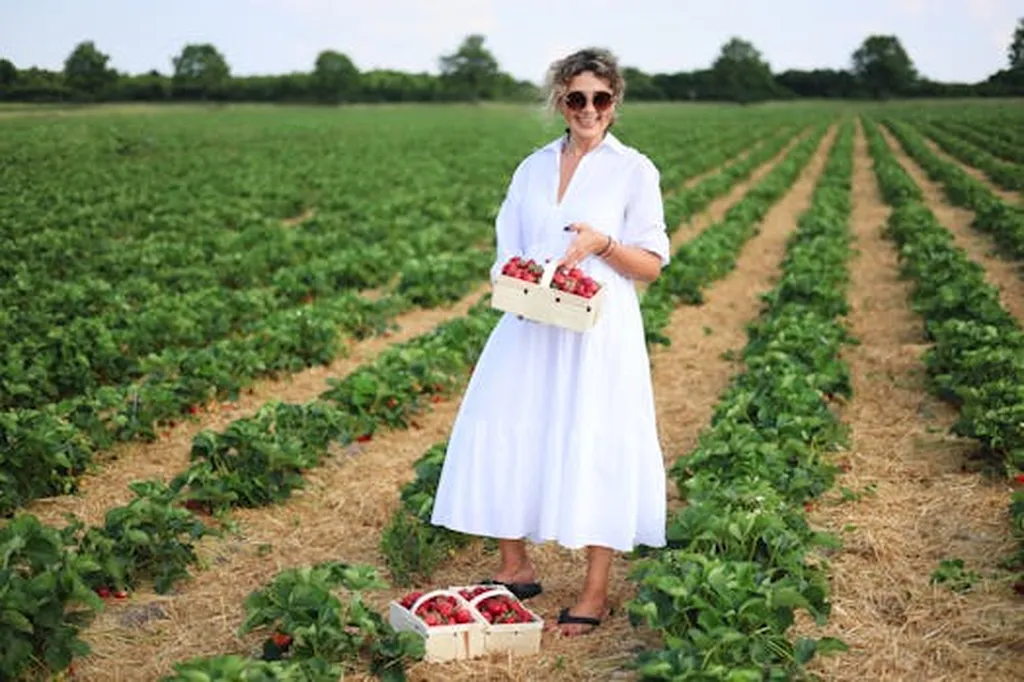In the ever-evolving landscape of agricultural technology, a groundbreaking study has emerged that promises to revolutionize the way we monitor and manage fruit diseases. Researchers from the Department of Computer Science and Engineering at SRM Institute of Science and Technology have developed a novel deep learning framework called Dual-Branch Attention-Guided Vision Network (DBA-ViNet), which sets a new benchmark in fruit disease detection and classification. This innovation, published in the esteemed journal BMC Plant Biology, could have profound implications for smart agriculture and automated crop health monitoring systems.
The primary objective of this research, led by Saravanan Srinivasan, was to create a robust model capable of identifying and classifying diseases in a variety of fruits, including apples, guavas, mangoes, pomegranates, and oranges. Utilizing computer vision techniques, the team curated an open-source collection of fruit disease images, comprising both diseased and healthy samples. The data was meticulously split into training, validation, and testing sets, with a 5-fold cross-validation approach to ensure the model’s generalizability and stability.
To benchmark the performance of their new model, the researchers compared it against state-of-the-art pre-trained convolutional neural network (ConvNet) models, including Swin Transformer (ST), EfficientNetV2, ConvNeXt, YOLOv8, and MobileNetV3. The DBA-ViNet architecture, featuring a hybrid design with two branches, efficiently integrates global and local features, significantly enhancing disease identification accuracy. “The dual-branch attention mechanism allows the model to focus on both the broader context and specific symptoms, leading to more accurate and reliable classifications,” explained Srinivasan.
One of the standout features of DBA-ViNet is its use of Grad-CAM (Gradient-weighted Class Activation Mapping) to visualize the regions contributing to each prediction. These heatmaps provide a transparent and interpretable view of the model’s decision-making process, verifying that DBA-ViNet correctly directs its attention to disease-specific symptoms. This transparency is crucial for building trust in the model’s classifications and ensuring its practical applicability in real-world agricultural settings.
The results of the study are nothing short of impressive. DBA-ViNet achieved a testing classification accuracy of 99.51%, with a specificity of 99.42%, recall of 99.61%, precision of 99.30%, and an F1 score of 99.45%. These metrics outperform all baseline models, demonstrating the superior capability of DBA-ViNet in fruit disease detection. While statistical significance testing was not performed in this study, the researchers plan to explore this in future work to further validate their findings.
The implications of this research are far-reaching. Accurate and reliable disease detection is a cornerstone of smart agriculture, enabling farmers to take timely and targeted actions to protect their crops. Automated crop health monitoring systems equipped with DBA-ViNet could significantly reduce the need for manual inspections, saving time and resources while improving overall crop yield and quality. “This technology has the potential to transform the way we approach agricultural disease management, making it more efficient, effective, and sustainable,” said Srinivasan.
As the agricultural industry continues to embrace technological advancements, the integration of deep learning frameworks like DBA-ViNet could pave the way for more intelligent and responsive farming practices. The study, published in BMC Plant Biology (which translates to “Chinese Journal of Plant Biology”), marks a significant step forward in the field of agritech, offering a glimpse into the future of automated crop health monitoring and disease management.
In the broader context, this research highlights the importance of interdisciplinary collaboration between computer science and agriculture. By leveraging the power of deep learning and computer vision, we can address some of the most pressing challenges in the agricultural sector, ultimately contributing to food security and sustainability. As we look ahead, the continued development and refinement of models like DBA-ViNet will be crucial in shaping the future of smart agriculture and ensuring a more resilient and productive food system.

